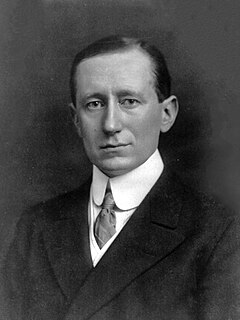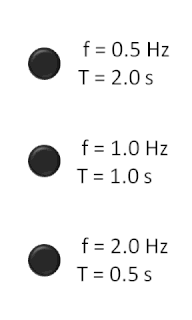
Shortwave radio is radio transmission using shortwave radio frequencies. There is no official definition of the band, but the range always includes all of the high frequency band (HF), and generally extends from 3–30 MHz ; above the medium frequency band (MF), to the end of the HF band.

BBC Radio 4 is a radio station owned and operated by the British Broadcasting Corporation (BBC) that broadcasts a wide variety of spoken-word programmes including news, drama, comedy, science and history. It replaced the BBC Home Service in 1967. The station controller is Gwyneth Williams, and the station is part of BBC Radio and the BBC Radio department. The station is broadcast from the BBC's headquarters at Broadcasting House, London. On 21 January 2019 Williams announced she was quitting the role. There are no details of when or who will be her replacement.

Voice of America (VOA) is a U.S. government-funded state owned multimedia agency which serves as the United States federal government's official institution for non-military, external broadcasting. It is the largest U.S. international broadcaster. VOA produces digital, TV, and radio content in more than 40 languages which it distributes to affiliate stations around the globe. It is primarily viewed by foreign audiences, so VOA programming has an influence on public opinion abroad regarding the United States and its leaders.
International broadcasting is broadcasting that is deliberately aimed at a foreign, rather than a domestic, audience. It usually is broadcast by means of longwave, mediumwave, or shortwave radio, but in recent years has also used direct satellite broadcasting and the internet as means of reaching audiences.
Soldatensender Calais (G.9) was a British black propaganda broadcaster during the Second World War operated by the Political Warfare Executive. It pretended to be a station of the German military broadcasting network. The station was in operation between 14 November 1943 and 30 April 1945, when it ceased operations.
Radio Canada International (RCI) is the international broadcasting service of the Canadian Broadcasting Corporation (CBC). Prior to 1970, RCI was known as the CBC International Service. The broadcasting service was also previously referred to as the Voice of Canada, broadcasting on shortwave from powerful transmitters in Sackville, New Brunswick. "In its heyday", said Radio World magazine, "Radio Canada International was one of the world's most listened-to international shortwave broadcasters". However, shortwave services were terminated in June, 2012, and RCI became accessible exclusively via the Internet. It also reduced to services in five languages. CBC also ended production of RCI news.

The American Forces Network (AFN) is the broadcast service operated by the United States Armed Forces' American Forces Radio and Television Service for its entertainment and command internal information networks worldwide. The AFN worldwide radio and television broadcast network serves American servicemembers, Department of Defense and other U.S. government civilians and their families stationed at bases overseas, as well as U.S. Navy ships at sea. AFN broadcasts popular American radio and television programs from the major U.S. networks. It is sometimes referred to as the Armed Forces Network. AFRTS, American Forces Network and AFN are registered trademarks of the U.S. Department of Defense. It is based at Fort George G. Meade in Maryland and is part of the Defense Media Activity.
The British Forces Broadcasting Service (BFBS) provides radio and television programmes for Her Majesty's Armed Forces, and their dependents worldwide. Editorial control is independent of the Ministry of Defence and the armed forces themselves.

It is generally recognised that the first radio transmission was made from a temporary station set up by Guglielmo Marconi in 1895 on the Isle of Wight. This followed on from pioneering work in the field by a number of people including Alessandro Volta, André-Marie Ampère, Georg Ohm and James Clerk Maxwell.

Shortwave listening, or SWLing, is the hobby of listening to shortwave radio broadcasts located on frequencies between 1700 kHz and 30 MHz. Listeners range from casual users seeking international news and entertainment programming, to hobbyists immersed in the technical aspects of radio reception and collecting official confirmations that document their reception of distant broadcasts (DXing). In some developing countries, shortwave listening enables remote communities to obtain regional programming traditionally provided by local medium wave AM broadcasters. In 2002, the number of households that were capable of shortwave listening was estimated to be in the hundreds of millions.

Radio broadcasting in Sri Lanka dates to 1923. Radio broadcasting, like other forms of media in Sri Lanka, is generally divided along linguistic lines with state and private media operators providing services in Sinhala, Tamil, and English language.

The BBC Forces Programme was a BBC radio station which operated from 7 January 1940 until 26 February 1944.

BBC Arabic may refer to the Literary Arabic language radio station run by the BBC World Service, as well as the BBC's satellite TV channel, and the website that serves as an Literary Arabic language news portal and provides online access to both the TV and radio broadcasts.
The year 1944 saw a number of significant happenings in radio broadcasting history.

Radio Luxembourg was a multilingual commercial broadcaster in Luxembourg. It is known in most non-English languages as RTL.
The year 1995 saw a number of significant events in radio broadcasting.

Aspidistra was a British medium wave radio transmitter used for black propaganda and military deception purposes against Nazi Germany during World War II. At times in its history it was the most powerful broadcast transmitter in the world. Its name – after the popular foliage houseplant – was inspired by the comic song The Biggest Aspidistra in the World, best known as sung by Gracie Fields.

Lord Haw-Haw was a nickname applied to the US-born Briton William Joyce, who broadcast Nazi propaganda to the UK from Germany during the Second World War. The broadcasts opened with "Germany calling, Germany calling", spoken in an affected upper-class English accent.

Chick Carter, Boy Detective is a 15-minute American old-time radio juvenile crime drama. It was carried on the Mutual Broadcasting System weekday afternoons from July 5, 1943 to July 6, 1945.
GI Jill was the disc jockey host of GI Jive, a music program on the Armed Forces Radio Service during World War II. She was notable for her positive effect of her personality and music selections on American troops' morale and for being "universally credited with being the No. 1 overseas attraction" on AFRS. By the end of January 1945 she had made 870 broadcasts.
















